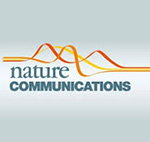October 2021
September 2021
Our report on a direct transcriptional repression mechanism by the photoreceptor phytochrome B has been published in Nature Communications. Congrats to all authors, particularly Chan Yu, Jiangman, and Qing!
The Arabidopsis red and far-red photoreceptor phytochrome B is known to regulate gene expression indirectly by modulating the abundance of a family of basic helix-loo-helix transcriptional regulators called PHYTOCHROME-INTERACTING FACTORs (PIFs). In this study published in Nature Communications, we report a new plant light signaling mechanism, in which phytochrome B controls light-responsive genes via direct [...]
August 2021
Congrats Prof. Yoo
Chan Yul has taken an Assistant Professor position in the School of Biological Sciences at University of Utah. Congratulations, Prof. Yoo!
April 2021
Our new paper on temperature signaling is featured in Editor’s Highlights at Nature Communications
Our new research article entitled "RCB initiates Arabidopsis thermomorphogenesis by stabilizing the thermoregulator PIF4 in the daytime" has been published in Nature Communications. This study identifies RCB (REGULATOR OF CHLOROPLAST BIOGENESIS) as a new essential component of temperature signaling in Arabidopsis. We show that RCB interacts directly with HEMERA, another temperature signaling component identified by [...]
October 2020
May 2020
Our review on nucleus-to-plastid phytochrome signaling has been published in Annu Plant Rev. Congrats Chan Yul and Soeun!
The biogenesis of photosynthetically active chloroplasts in flowering plants (angiosperms) is initiated by light through the red and far‐red photoreceptors, phytochromes, which activate photosynthesis‐associated genes encoded by both the nuclear and plastid genomes. Because photoactivated phytochromes localize to the nucleus but not the plastids, phytochromes ought to control plastid transcription through nucleus‐to‐plastid or anterograde signalling. However, [...]
April 2020
Chan Yul will give a talk in a virtual symposium organized by postdocs at Stanford University and Carnegie Institution for Science
Chan Yul will give a talk at the upcoming mini-symposium organized by the IDPSIG (Intrinsically disordered protein scientific interest group) -- a grass-roots organization that was formed in 2017 by postdoctoral trainees at Stanford University and Carnegie Institution for Science. The meeting schedule can be found here.
Congratulations to Joseph, Keunhwa, and Yongjian for the story on temperature-induced photobody dynamics published in Nature Communications
Congrats to Joseph, Keunhwa, and Yongjian for their new study on temperature-dependent dynamics of the phyB-containing subnuclear photobodies. Their results showed unexpectedly that individual photobodies respond to temperature increases differently, thereby suggesting that individual photobodies are different with distinct thermostabilities and could act as thermosensors. You can read the here and the new release at [...]


